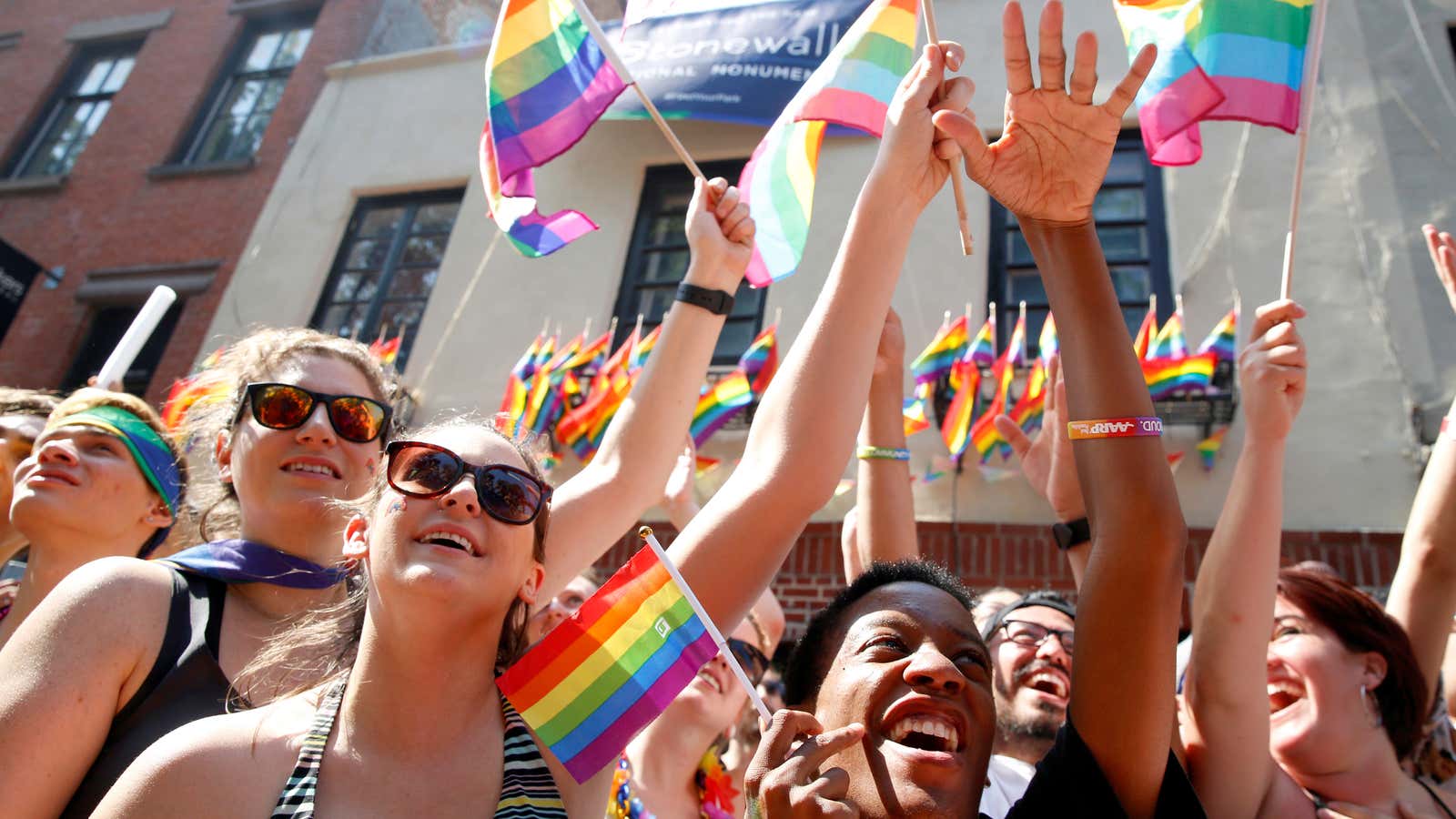The number of Americans who identify as bisexual is on the rise. According to recently released data from the 2018 General Social Survey (GSS), a nationally representative survey of people in the US collected every two years, over 3% of US adults say they are bisexual (a sexual identity in which someone is attracted to people of their gender or other genders). This is up from just over 1% in 2008. (The GSS allowed individuals to self-classify as “heterosexual or straight,” “gay, lesbian, homosexual,” “bisexual,” or “don’t know.”)
An analysis of the GSS data by the sociologists D’Lane Compton and Tristan Bridges shows that the change has been almost entirely due to an increase in the number of bisexual women—the population of men who identify as bisexual has barely budged. Even more specifically, they find that the upswing in bisexuality among women has been concentrated among young women of color, specifically black women. Compton and Bridges note that the GSS data mirrors findings from a Gallup survey that found that “women, college-educated people, people of color, and those who are not religious” accounted for the steepest rise in LGB self-identification, in the period between 2012 and 2016.
Compton and Bridges don’t offer an explanation for why the US has seen a relatively steep rise in bisexuality compared to other identities. One possible reason is that in the past decade, the debate around of bisexual erasure, in which the “existence or legitimacy of bisexuality (either in general or in regard to an individual) is questioned or denied outright,” writes the Gay & Lesbian Alliance Against Defamation (GLAAD), has become more prominent. This could have contributed to a resurgence of the term over the survey period.
As for the overall rise in LGBQ-identifying residents since 2008, when the GSS began asking about sexual identity, there could be a number of explanations. For one, there have been more (and more favorable) representations of queer people in the news, on television, and in film over the past two decades, with 2018 seeing record growth in LGBTQ roles on TV, with queer people of color outnumbering their straight, white counterparts by 50% to 49%, according to GLAAD’s annual TV diversity report. The study also noted that Netflix is the streaming platform that has the highest percentage of LGBTQ characters, dominating outlets like Hulu and Amazon Prime.
What’s more, a rise in LGBTQ candidates running for political office in the past few years suggests that the social acceptance of non-binary sexual identities is becoming more widespread. Kyrsten Sinema, for instance, became the first openly bisexual member of Congress in 2012 and was sworn in as the first openly bisexual US senator this past January.
What’s more, as Michael Gold wrote for the New York Times in 2018, the vocabulary around sexuality itself has changed in the past decade. “Times and attitudes have changed, and the language used to discuss sexual orientation and gender identity has also changed,” he says. Indeed, there’s now “a cluster of ancillary terminology around both sexuality and gender,” as Gold puts it, that’s now available to describe one’s sexual identity. The language of the early aughts, meanwhile, was sparse and reductive.
That’s not to say that discrimination has been wiped out. While US residents who identified as gay, lesbian, or homosexual grew from 2010 to 2016, the data suggests it may have declined from 2016 to 2018. This is less surprising considering 2016 was the year Donald Trump was elected US president; his rhetoric on the campaign trail (and throughout his presidency so far) is thought to have contributed to a rise in reported race-, religion-, and sexual orientation-based hate crimes, something that’s now being examined by a congressional committee.
